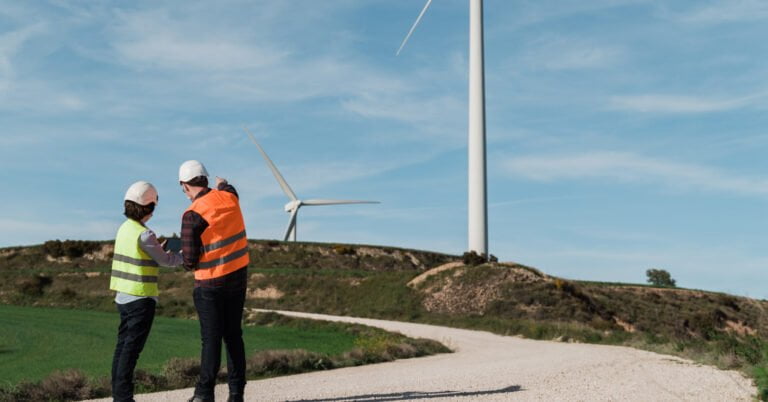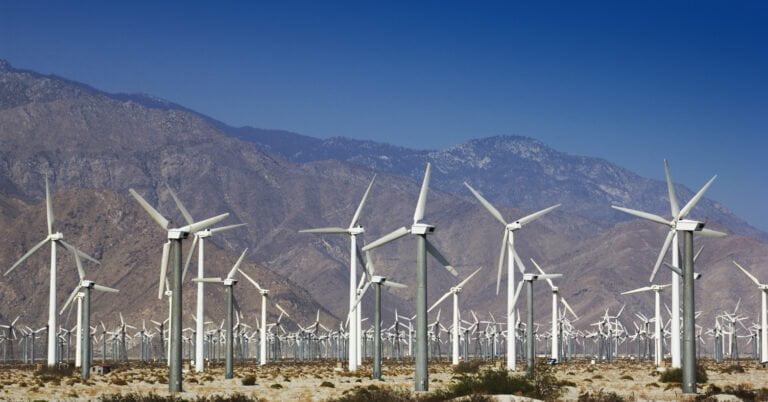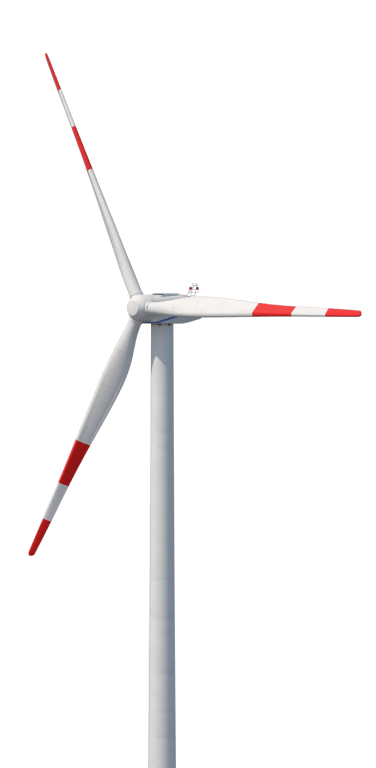

EU leaders agree ‘targeted’ support for clean tech; U.S. wind power prices fall
EU leaders agree ‘targeted’ support to counter U.S.
European Union leaders agreed on February 10 to provide “targeted, temporary and proportionate” support to clean technology companies in order to counter competition from the United States and China.
On February 1, the European Commission (EC) set out a Green Deal Industrial Plan to mobilise state aid and EU funding for clean technology companies and accelerate the permitting of manufacturing facilities.
The EC’s plan, which must be agreed by EU members, comes as a lack of federal financing in Europe, along with volatile regulation and permitting challenges, are making the U.S. more attractive for investment.
President Biden’s Inflation Reduction Act provides $369 billion of green subsidies, including tax credits that increase the profitability of U.S. wind and solar projects as well as new manufacturing facilities.
The EC proposes to loosen EU state aid rules until the end of 2025 to allow the bloc’s 27 governments to help with investments in renewable energy or decarbonising industry.
EU members would be allowed to draw on existing EU funds, since national budgets differ between members, the EC said. The principal source of EU funding will be the 225 billion euros ($245 billion) of loans and 20 billion euros of grants remaining from the EU’s 800 billion euro post-pandemic recovery fund.
Eleven European Union countries urged “great caution” in relaxing the bloc’s state aid rules, saying it risked damaging competition inside the bloc, a document showed.
The document dated Feburary 10 was sent to the bloc’s executive European Commission and signed by Denmark, Finland, Ireland, Poland, Sweden, the Netherlands, Hungary, Latvia, the Czech Republic, Slovakia and Belgium, Reuters reported.
The EC confirmed the receipt of the letter and said it was looking to adopt new rules “in the coming weeks, taking into account the feedback received,” Reuters said.
EC will also produce a Net-Zero Industry Act that includes measures to accelerate the permitting of clean technology factories. In December, EU energy ministers agreed temporary regulation that aims to shorten permitting times for renewable energy projects.
Commission President Ursula von der Leyen said the act would be presented before the next scheduled meeting of EU leaders on March 23-24.
Denmark suspends reviews of offshore wind projects
Denmark has suspended the review of existing and new offshore wind applications due to a potential conflict with European Union law, it said in a statement late on Monday.
Industry group WindEurope slammed the pause, warning it creates investment uncertainty for “20 GW of offshore wind currently under planning and development.”
Denmark allows renewable energy developers to submit unsolicited applications through an “open door scheme” that runs separately from public tenders.
Granting permits under this program could violate EU law, the Danish Energy Agency warned.
Energy minister Lars Aagaard said he had reached out to the European Commission to resolve the matter.
“I can assure you that I will be pursuing prompt responses on behalf of those applicants who are currently left uncertain about the future of their projects,” he said.
Denmark aims to increase offshore wind capacity fivefold to 13 GW by 2030 and the current suspension would not affect that target, the energy ministry said.
Siemens Gamesa pledges New York factory upon offshore win
Turbine supplier Siemens Gamesa plans to build a $500 million nacelle production facility in New York if its turbines are selected in an upcoming offshore wind tender, the company said February 13.
Siemens Gamesa is the largest supplier of offshore wind turbines and is looking to gain a strong foothold in the emerging U.S. offshore wind market. The European company already operates two onshore wind production sites in the U.S. and plans to build the first U.S. offshore wind turbine blade factory in Virginia.
New York is looking to procure between 2 GW and 4.7 GW of capacity in its third procurement round and the nacelle facility would create around 420 jobs, Siemens Gamesa said.
Forecast U.S. offshore wind installations
On February 2, Siemens Gamesa said its losses in October-December more than doubled to 884 million euros ($974 million) due to higher warranty provisions and maintenance costs following faulty components on onshore and offshore platforms.
All turbine suppliers have been hounded by volatile costs, logistics issues, and European regulation changes that have increased market uncertainty.
Danish group Vestas warned of a slower year ahead on January 27, due to slow permitting processes in Europe and dampened U.S. activity before President Biden’s Inflation Reduction Act takes effect.
U.S. wind PPA prices fall for first time since Q1 2021
Wind power purchase agreement (PPA) prices in North America fell for the first time in nearly two years in the fourth quarter of 2022 as support measures in President Biden’s Inflation Reduction Act started to take effect, pricing platform LevelTen Energy said in a statement on January 31.
Wind PPA prices fell by 1.9% last quarter to $48.71 per MWh, it said.
Signed into law in August, the inflation act provides $369 billion of green subsidies, including tax credits that increase the profitability of U.S. wind and solar projects as well as new manufacturing facilities.
The act “appears to have provided a degree of long-term financial support and certainty that has allowed developers to modestly decrease PPA prices,” LevelTen said.
Meanwhile, solar PPA prices climbed by 8.2% in the fourth quarter of 2022 to $45.66/MWh as developers passed on inflationary pressures from higher global materials costs, supply chain issues and U.S. trade policy.
A ban on solar imports from China’s Xinjiang region under the Uyghur Forced Labor Prevention Act (UFLPA) caused a pileup of solar components at U.S. ports as customs agents checked products.
“Those delays and access to that equipment is introducing significant amounts of uncertainty on timelines, and therefore PPA prices are going up to cover that risk,” LevelTen Senior Director of Developer Services Gia Clark told Reuters in an interview.
Demand for solar projects remains strong and prices might stabilize in the second half of 2023, Clark said.
Solar to dominate U.S. utility-scale installations in 2023
U.S. solar developers plan to install a record 29.1 GW of utility-scale capacity this year, almost triple the capacity installed in 2022 and over five times expected wind capacity, the U.S. Energy Information Administration (EIA) said in a research note based on generator plans.
Annual utility-scale wind installations are set to slow to 6 GW this year, less than half the capacity installed in 2020 and 2021, EIA said. Around one third of this capacity will be in Texas, it said.
U.S. wind installs have slumped due to inflation and logistics challenges, grid connection delays and the phasing down of earlier U.S. production tax credits (PTCs). Support measures in President Biden’s inflation reduction act will accelerate deployment but it will take time to flow through to new installations.
Last year, solar installations fell by 23% and were far lower than forecast by the EIA due to a combination of volatile prices and supply disruptions following the coronavirus pandemic and uncertainty over U.S. import tariffs. In addition, a ban on solar imports from China’s Xinjiang region under the Uyghur Forced Labor Prevention Act (UFLPA) blocked inflows at U.S. ports.
To ease tariff uncertainty, President Biden waived import tariffs on the four largest supplier countries in Southeast Asia until 2024.
“We expect that some of those delayed 2022 projects will begin operating in 2023,” EIA said.
New tax incentives in President Biden’s Inflation Reduction Act are set to stimulate wind and solar investment in the coming years but the U.S. lies far behind President Biden’s goal of a decarbonised power sector by 2035.
U.S. wind installations must rise to 17 GW/year in 2026-2030 and 50 GW/year in 2031-2035 to meet the President’s goals, the Department of Energy (DOE) said in a report published in 2021.
Solar installations would need to hit 60 GW/year by the middle of the decade and 70 GW/year in 2031-2035, the DOE said.
Tags:
Compartir:
Categories
Entradas recientes


Benefits of wind energy on the environment

5 industries that are betting on wind energy in Mexico











